There is something that most outdoor enthusiasts, especially hikers and campers do not wish to come across – a bear in the wood. Humans are no match for this wild animal, and when provoked, it can inflict so much pain using its claws, teeth, and entire body. Sometimes, bear attacks are fatal. Before you can decide to run, you need to ask yourself; how fast do bears run? Of course, it will be an atrocious idea to even think about outrunning a bear. Contrary to the myths out there, these creatures are faster than humans.
The bear is an omnivore, meaning that it will add anything to its diet and humans are not an exception. Although they don’t hunt humans for food, they’ll definitely attack when threatened or provoked. Those likely to encounter bears in the wilderness are hunters, bikers, campers, and hikers.
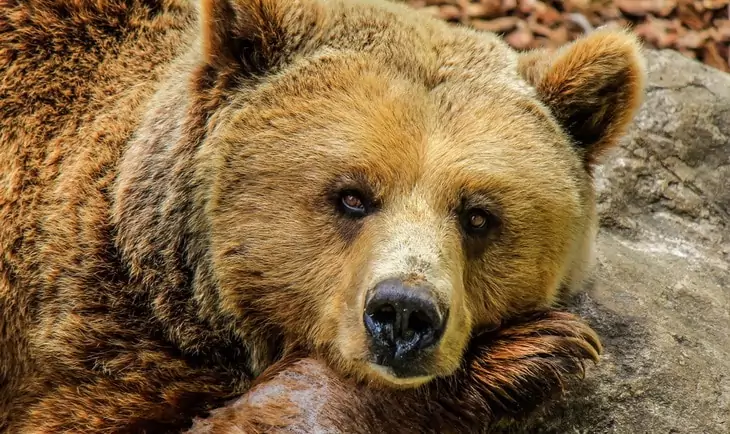
Statistics revealed that attacks by bears are not common, which is logical since they only take place when bears and humans cross paths. The table below represents the statistics of the number of deaths that have occurred after humans have encountered with bears in North America.
| YEAR | BROWN BEAR | BLACK BEAR |
| 2005 | 3 | 3 |
| 2006 | 1 | 1 |
| 2007 | 1 | 2 |
| 2008 | 2 | 1 |
| 2009 | 0 | 2 |
| 2010 | 2 | 1 |
| 2011 | 2 | 2 |
| 2012 | 1 | 0 |
This article will offer a guide to how you can avoid bear encounters, and what to do when you come across a bear. Additionally, we will examine how fast bears are and whether or not you can outrun them.
HOW FAST ARE BEARS
The speed of a bear on land varies from one species to the other. The black bears are often the fastest, followed by grizzlies who run a speed of approximately thirty miles per hour. On the other hand, human clock in about 28 miles per hour. So, even as you ask how fast are bears, it is imperative to remember that they are faster than humans. Bears run pretty fast. Do not even think about running from them.
If anything, if a bear is after you, defend yourself through other means but don’t attempt to run. The way these animals think is that if you run, you are a meal. Running away from them makes them aware of the fact that you are afraid and not dangerous to them.

Bears express dominance among each other by direct stares. When they meet, bears stand up to determine who amongst them is taller, and look into each other to determine which one is fiercer. This act helps in determining the bear that will keep the territory while others depart. If you happen to do the same – stand tall and stare at the bear without provoking it – it will likely think you are too tall and dangerous to mess with.
However, what is important is to remember that if the bear attacks, you will not be able to outrun it as its speed is higher compared to that of an average human. If it attacks, you need to defend yourself. Fight back, climb a tree, or the bear will harm you.
SITUATIONS TO AVOID
When you are in the wilderness, there are some situations you would want to avoid so as to prevent bear attacks. It’s important to be keen, so as to avoid these kinds of situations.
Bears addicted to human food and garbage
Once the bears get used to meals consumed by humans, they get drawn to places that are occupied by humans. This can include the camp sites which are located far away from the urban centers.

In addition to that, poor garbage management in the back country can expose campsites to regular bear attacks. Why not read on how to choose the best bear canister to help protect your food while in camp.
Bears with young cubs stuck on tree branches
If this is the case, the mother bear will not exit the vicinity, but will do all its best to defend its cubs. Keep away from bear cubs as their mothers may attack without hesitation if they think you are within that zone.
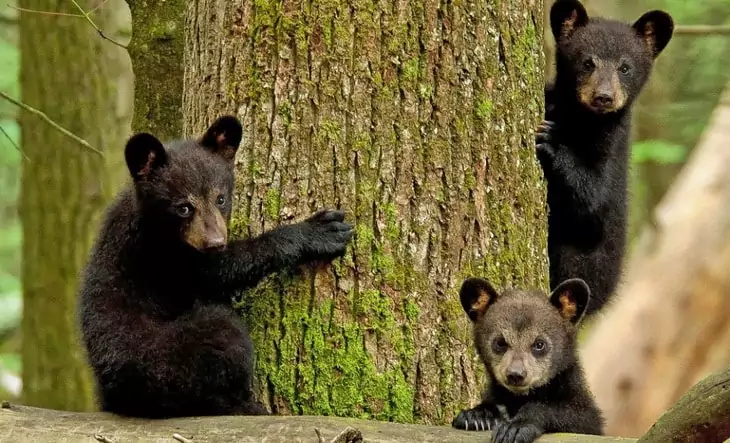
Also, you need to be prepared with a bear spray each time you are out in the wilderness.
Bears with cubs that take part in a direct charge
Just like the cub stuck on a tree, cubs participating in a bluff charge could create a dangerous situation as you’ll be dealing with numerous animals.

While this situation hardly occurs, it allows the bears to guard their site in the most effective manner.
Bears defending their kill site
These animals can be violent when they are protecting their kill site. Be careful to identify possible signs of these sites.

Look for signs like the accumulation of raven among other scavenging animals and birds.
Predatory encounters
While the predatory encounters hardly occur, such situations can be quite dangerous. Since you are the prey, you need to be prepared for an attack that is just about to happen.

The bear can make advancements towards you, getting closer, before deciding whether or not to attack.
To minimize the chances of bears going to your camp site, our article on using odor proof bags for backpacking will help you.
WHAT TO DO WHEN YOU ENCOUNTER A BEAR
Every time you camp in a country filled with bears, you need to be prepared for the reality of encountering one of these animals. The pointers in this guide will help minimize the possibility of coming across a bear. Even so, you still have to be ready when the bears resurface suddenly.
Whenever you are in the wilderness, always ensure you use your binoculars to assess your environment and to determine whether there are any signs of bears in your area. In a more forested area, remember to create noises so the bears can recognize that humans are around. Also, keep an inventory of all the trees you can climb, just in case the unexpected happens.
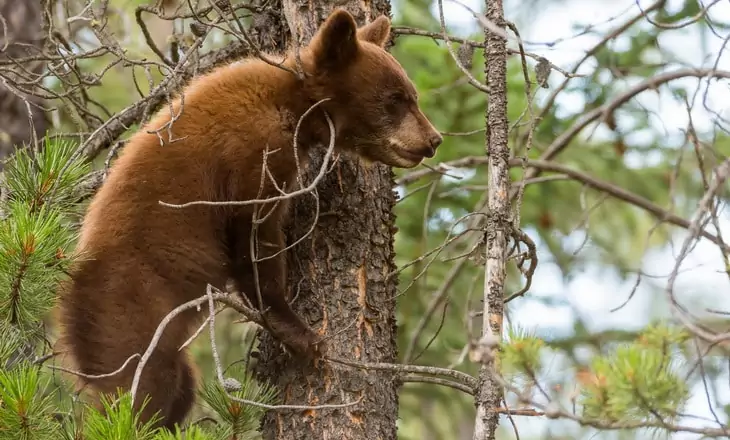
Just remember, grizzlies are good at climbing short trees, and the black bears are swift climbers. To be safe, you need to look for a tree that will make it possible for you to be approximately 33 feet (10m) above surface of the ground. Do not forget that these animals can run at about 30 mph (50 km/h). You will require time to climb the tree, so do your calculations of distance and speed.
SITUATIONS YOU MAY FACE
The bear hasn’t sensed your presence
Do not make your presence known if the bear hasn’t seen you yet. Where possible, retreat without creating noises and give it plenty of space. If possible, retreat and leave the path for the bear. However, if you have to continue, back off some distance, and give it some time to leave the area.

To avoid problems, you can also make a wide detour quickly and quietly.
The bear has detected your presence
The goal at this point is to behave in a manner that will make it possible for the animal to recognize that you are human and that you’re not a threat. Speak gently and calmly, so it knows your intentions are not to create havoc. When they recognize that you are a human, they will often give ground.

If possible, make sure you move away carefully and slowly, keeping watch that the bear doesn’t attack.
The bear has identified your presence and its intention is to attack
If the bear has spotted your presence and is exhibiting signs of violence, it’s imperative to try as much as possible to remain composed and weigh the different options you have. Hopefully, there is some distance between yourself and the bear.

The following are life-saving tips you need to have in mind:
- Evaluate the circumstances – Check to see if you are facing a grizzly or a black bear. Are the cubs involved? Can you see the trees you can climb nearby? Is there enough time for you to climb the tree?
- Never make a mistake of running – You can never outrun the bear so don’t even think about it. Despite people saying otherwise, both the grizzly and black bears are able to outpace humans in any terrain, whether uphill or downhill. People may advise you to run down the hill when a grizzly is chasing you. Don’t try it! This is only a myth.
- Try a slow retreat – Move slowly and attempt to create a distance between the bear and yourself. Talk in a calm manner so the bear can recognize you are a human and back up slowly. Make sure your backpack on your back as this could offer some protection. Do not make eye contact but be on the watch as you attempt to retreat.
- If a tree is available, climb it – If there’s sufficient time, make sure you climb the tall trees near you. Do not forget that the black species are agile climbers and the grizzlies can climb short distances. You should climb at least 33 feet or 10 meters high to minimize the likelihood of the bear pulling you back down. Although some species are able to climb trees, the idea is that they won’t feel threatened and will therefore not chase after you.
- If the bear attempts to charge, make sure you back away – These animals often bluff charge before they can attack. This act is meant to allow their enemies to back down. This evolved as a technique for avoiding encounters with enemies, and it offers you the chance to back away.
- Use your pepper spray – The use of pepper spray is the last resort. This is only useful when used at close range (five to fifteen feet). The wind will minimize this range even further, blowing the spray back to you. If the bear is within this range, point the spray at the eyes and discharge its content. Hopefully, this will disorient it to give you an opportunity to escape or even deter the bear from attacking. After you have the canister of bear spray, you need to discard it. While the spray can prevent attacks, the pepper smell can also attract bears. Read our piece on the best bear spray to use in case of bear attacks.
- If the black bear (or any other is stalking you) makes contact – If you are attacked by a black bear or any other for that matter, try your best and fight back. Use everything there is at your disposal to scare them off. Black bears are usually a bit more timid compared to grizzlies, so there’s a high chance they will feel scared and leave the scene. Also, if the bear is stalking or you’re in a predatory situation, then fighting back is the only chance you have. This can also happen to any attack during the night. If you are ambushed by a wild animal, and it’s late to escape, use anything around you as a weapon to scare them away.
- When grizzly attacks – If the grizzly makes contact, or if the animal is stalking you, make sure you fight back with everything at your disposal. Generally, playing dead during the daytime grizzly encounter often minimizes their intensity of the attack and will probably leave. A good number of attacks from grizzlies are defensive in nature. Therefore, by playing dead, the bear will know that you are not a threat. Always remember to have your backpack on as this will offer additional protection. When on the ground, lie on your side. Bend your legs towards your chest and insert your head in between your legs. Lock your legs between your arms and hold tight. Alternatively, you may lie on your stomach with your backpack on and cover your neck with your hands to protect it. However, playing dead is always a last resort. It’s advisable to stay on your feet to allow you to divert or dodge an attack.
- Once the attack is complete, remain patient. Do not be in a hurry to leave as this could alert the bear. First, try to determine if the animal is still within the vicinity. If it has moved on, make your way towards help as fast as possible. A detailed explanation is given below.
WHAT TO DO WHEN THE ATTACK IS OVER
When the attack is over, do not get up as soon as the bear is believed to have left, tempting as this may seem.

Here’s what you need to do:
- Continue laying down and evaluate your surroundings
- Listen carefully for any sounds that indicate the presence of the bear
Once you are confident that the bear has left:
- Get up and move towards the opposite direction from that which the bear used to leave the scene. Do not risk another attack.
- Warn everyone else within the areas, of a bear presence in the area
- Alert the relevant authorities and seek medical attention
AVOIDING BEARS IN THE BACK YARD
Much focus has been placed on how you can avoid attacks in the wilderness and little has been on how to do the same in your backyard. If you are living in a bear country, the likelihood of coming across a bear is high. Therefore, it’s important to have some ideas of how you will handle bears in your back yard. When it comes to controlling and preventing attacks by bears in the back yard, here’s what you need to know.
Keeping the animals wild is the responsibility of every person
Bears can be attracted to yards and town sites by various attractant. As a resident, it’s your responsibility to minimize the probability of bears being attracted to your neighborhood by assuming an active role in getting rid of a variety of human and natural enticements. Nonetheless, it’s not illegal to leave the bird feeders or to do things that could attract wild animals to your area.

At the same time, anyone who keeps bird feeders out of season, likely endangers the lives of everyone in the community. A bear that is attracted to the feeder may end up attacking someone. If there’s anyone within your residency, not considering the community’s safety, try talking to them. If you are uncomfortable talking to them, go ahead and leave them a note.
Garbage disposal
Be careful not to store any garbage outside your home or inside your truck. Pickup truck toppers are usually not bear proof.

You need to remember that food smells attract bears to some locations.
Compost heaps
Many people dwelling in the mountain are also ecologically minded, and the compost pits are usually a critical aspect of waste management. At the same time, you need to know what to put in the compost heaps.
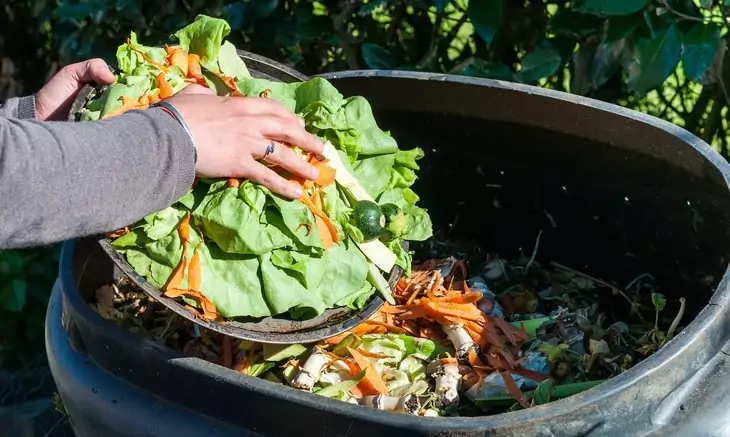
Avoid putting meat by-products like dairy products, bones, fish, egg shells, or fruits in the compost. You can add some lime to your heap so as to speed up the decomposition process and minimize the smell.
Bird feeders
In many places, the bird feeders have played a significant role in attracting grizzlies into the residential areas. There’s no good reason for having bird feeders out in the summer as there are so many natural foods available during that period.

If your intention is to have these feeders, be sure to wait until November before you can start to fill them with seeds. Do not forget to take the feeders down during the spring. Also, be careful not to store your feeder outside.
Barbeque
Having a summer barbecue on the patio is one of the most exciting things. The smell of juicy steak can diffuse into the air, attracting more than just the neighbors. These smells can also attract bears to your deck after you’ve gone to bed. Once you are done with your feast, make sure you clean your grill. Burn the food off your grill to ensure there are no traces of meat.

Also, when storing the barbecue grill, be certain to cover it using a plastic bag to minimize the smell coming from it. Keeping the doors of your patio closed when cooking also minimizes the smell of food.
PLANTS THAT ATTRACT BEARS
Before buying a tree or shrub for your landscaping project, be certain you are not purchasing a tree that will attract bears your yard. The table below shows a list of plants that can attract bears. If possible, try to avoid these fruits, plants, and herbs.
| Grass and Grass-like plants | Fruits and berries | Herbs and others |
| Sedges
Trisetum Brome, Northern Awnless Tufted Hair Grass |
Bearberry, Common
Bearberry, Alpine Bearberry, Dwarf Bearberry, Tall Bog Cranberry Blueberry Cherry, Pin Cherry, Choke Cowberry Current, Wild Cranberry, Low-bush Elderberry Dogwood, Red-osier Grouseberry, Wild Gooseberry, Wild Strawberry, Wild Raspberry, Wild |
Sorrel, Mountain
Cow Parsnip Sorrel, Mountain Vetch, Wild Vetchling, Pea Vin |
WRAPPING IT UP!
When in a survival situation, you need to have some ideas of how to handle bears when they are within the vicinity or when they want to attack. Bears can be dangerous and sometimes fatal, so you need to be careful when dealing with them. Make sure you follow the survival tips given in this guide to avoid finding yourself in a hard situation with a grizzly.
The most important way to avoid encounters with bears in the wilderness is to be aware of the surroundings and practice the right Leave-No-Trace ethics. However, if you happen to encounter one, this article has offered some helpful pointers on how you should act. You should also know how to differentiate a black bear and a grizzly bear since this is also an important factor in utilizing some of the survival skills. For instance, black bears are agile climbers whereas the grizzlies only climb short distances.
You also need to remember that the coloring of the coat, is not always the best way to identify different species of bear. Grizzlies are usually aggressive as opposed to black bear and have a unique hump on their shoulders. If it is a brown bear, lay down; if it’s a black bear, fight back. This is an essential survival tip for dealing with bears. What’s more important, do not attempt to outrun a bear since they are much faster than humans.
Before embarking on your next camping trip, our piece on how to prevent wild animal attacks will be a great help.

So, in your opinion, how fast are bears? Have you ever encountered a bear in the wild or your backyard? How did you survive the attack? Please let us know by posting your response in our comment section below.

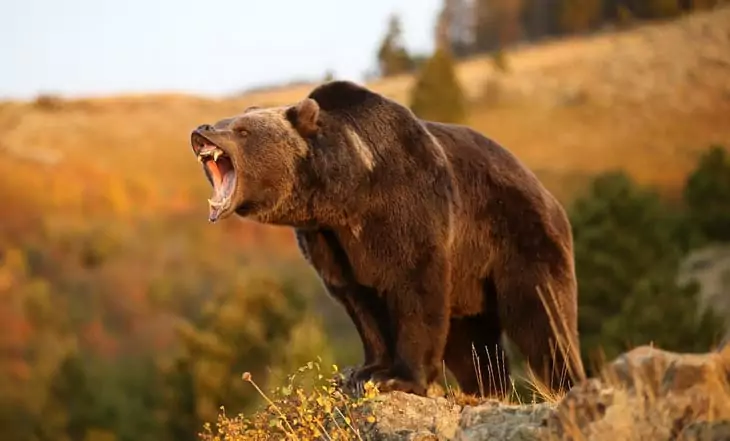






This is a very important article to read, even if you never plan on camping in bear territory. You really never know if you’ll run into a bear, even in your daily life. It may seem unlikely but where is the harm in being prepared? Thank you for teaching people how to deal with bear attacks and dispelling the myths about their running speed.
It is important to be ready for anything out there!
It’s good to know that running away from a bear is a bad decision because that’s the first instinct that most people get when they face any wild animal. I guess everyone should have basic skills such as knowing how to climb trees and how to tiptoe without making any sound. And since I have learned that bears stand on their hand legs to size each other and to determine dominance, would it help if I put my bag pack on my head to look taller than the bear?
Probably not, but safety first!